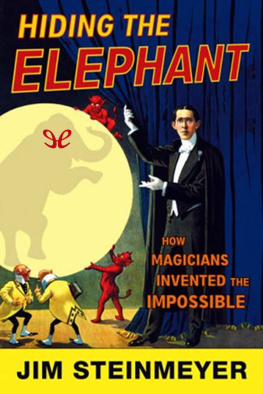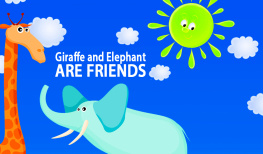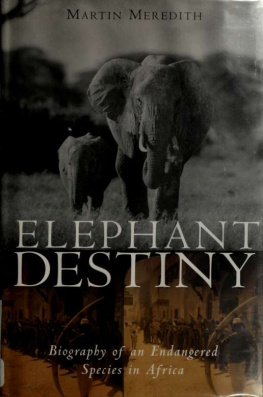Jim Steinmeyer - Hiding the Elephant
Here you can read online Jim Steinmeyer - Hiding the Elephant full text of the book (entire story) in english for free. Download pdf and epub, get meaning, cover and reviews about this ebook. year: 2004, publisher: ePubLibre, genre: Home and family. Description of the work, (preface) as well as reviews are available. Best literature library LitArk.com created for fans of good reading and offers a wide selection of genres:
Romance novel
Science fiction
Adventure
Detective
Science
History
Home and family
Prose
Art
Politics
Computer
Non-fiction
Religion
Business
Children
Humor
Choose a favorite category and find really read worthwhile books. Enjoy immersion in the world of imagination, feel the emotions of the characters or learn something new for yourself, make an fascinating discovery.
- Book:Hiding the Elephant
- Author:
- Publisher:ePubLibre
- Genre:
- Year:2004
- Rating:5 / 5
- Favourites:Add to favourites
- Your mark:
- 100
- 1
- 2
- 3
- 4
- 5
Hiding the Elephant: summary, description and annotation
We offer to read an annotation, description, summary or preface (depends on what the author of the book "Hiding the Elephant" wrote himself). If you haven't found the necessary information about the book — write in the comments, we will try to find it.
Jim Steinmeyer: author's other books
Who wrote Hiding the Elephant? Find out the surname, the name of the author of the book and a list of all author's works by series.
Hiding the Elephant — read online for free the complete book (whole text) full work
Below is the text of the book, divided by pages. System saving the place of the last page read, allows you to conveniently read the book "Hiding the Elephant" online for free, without having to search again every time where you left off. Put a bookmark, and you can go to the page where you finished reading at any time.
Font size:
Interval:
Bookmark:
and Notes
I'm grateful to my associates in magic, who share my interests and have shared their research into these subjects as well as supporting my own research. To Mike Caveney, author and collector, and John Gaughan, craftsman and collector, I'm particularly grateful for years of friendship and assistance. Thanks, in general and not insignificantly, to David Berglas, Don Bice, David Britland, Claude Crowe, Patrick Culliton, Anne and John Davenport, Rick Davis, Edwin Dawes, Tim Felix, Charlotte Hargreaves, Richard Hatch, Ricky fay, William Kennedy, Bill Liles, fay Marshall, John A. McKinven, Patrick Page, Sue and Pete Pudduck, John Salisse, Helen and Alan Wakeling, and Peggy Youngs. I'd also like to recognize the contributions of a number of friends who are, unfortunately, no longer with us: Jeffrey Atkins, Talky Blank, Leslie Cole, Werner C. Dornfield, Walter Gibson, Harry Hahne, Doug Henning, Bob Lund, Frances Ireland Marshall, fane Thurston Shepard, Vic Torsberg, T. A. Waters, Peter Warlock, and Orson Welles.
Thanks also for the many years of support from my family, Harry and Sherri Steinmeyer, Sue and Stewart Church, Grace Steinmeyer, and my late father, Harry W. Steinmeyer.
For helping to make these various adventures and explorations into a book called Hiding the Elephant, thanks to Tim Onosko for his suggestions and my agent Jim Fitzgerald. I'm grateful to my good friend William Stout for the deft portraits that adorn the chapters, and to Mike Caveney for the use of photographs from his collection. Through this process I've been fortunate for the support I have received from the folks at Carroll and Graf, especially assistant editor Keith Wallman and my editor, Philip Turner, who has offered wonderful insights in translating my world into the real world.
Finally, I'm especially appreciative for the help of my wife, Frankie Glass. Although she's far too knowledgeable on these subjects to really be unbiased, her critical suggestions and encouragement have been essential to this project.
Chaper 1: Overture
I've assembled the account of Houdini's illusion from several sources, borrowing the words from Houdini's own account in The Sphinx magazine, a journal for magicians, March 1918, and Clarence Hubbard's account in the same issue. Houdini's biographies all mention his elocution, in particular Milbourne Christopher, Houdini, the Untold Story (Thomas Y. Crowell, New York, 1969) and Kenneth Silverman, Houdini!!! (Harper Collins, New York, 1996). The best account and comparison of contemporary accounts of the illusion is in Patrick Culliton, Houdini Unlocked (Kieran Press, Los Angeles, 1997).
The challenge from the Daily Mirror has been recounted in these books. I'm grateful to my friend Bill Liles, who has examined the actual Mirror handcuffs and speculated on Houdini's ability to pick the lock.
Servais LeRoy's remarks on Houdini were quoted in Mike Caveney and William Rauscher, Servais LeRoy, Monarch of Mystery (Magic Words, Pasadena, California, 1999). Orson Welles shared his memories of Houdini's show during conversations with me in the early 1980s in Hollywood. Welles also remembered meeting Houdini before the show, when his father took him backstage to the magician's dressing room. Young Orson explained to Houdini that he was learning magic. Houdini instructed him in the rudiments of the Pass, a difficult maneuver with a pack of cards. As Orson juggled the cards in his hands, attempting to follow Houdini's lead, the magician told him, "Never perform anything before an audience until you've practiced it a thousand times." At that moment the dressing room door burst open, and Jim Collins, Houdini's chief assistant, informed his boss, "We just got the new lamp trick from Conradi." "Greatput it in tonight!" Houdini fired back.
David Bamberg's memory of that precise lamp trick is from David Bamberg, Illusion Show (Meyerbooks, Glenwood, Illinois, 1991). Doug Henning performed the Conradi Lamp on his 1981 NBC television special; the prop was owned and restored by John Gaughan, and despite its reputation, it looked great on our show. Vic Torsberg's memories are from my conversations with him in Chicago during the late 1970s.
Walter Gibson told me about Thurston and Houdini in a conversation at his home in Eddyville, New York, in 1980. Thurston's routines are a vivid memory for several of my good friends in magic, including Werner C. Dornfield, Gibson, John McKinven, and Welles. Thurston's backstage mantra was recounted in a conversation with fane Thurston; his approach to his audience was also described in Dale Carnegie, How to Win Friends and Influence People (Pocket Books, New York, 1981). Thurston's routines are reconstructed from a transcript of his patter in Maurine Christopher and Jim Steinmeyer, Howard Thurston's Illusion Show Work Book II (Magical Publications, Pasadena, California, 1992). The Levitation patter is from Maurine Christopher and Jim Steinmeyer, Howard Thurston's Illusion Show Work Book (Magical Publications, Pasadena, California, 1991).
Chapter 2: The Ghost
Barnum's remarks on ghosts are from Phineas Taylor Barnum, The Humbugs of the World (Carleton, New York, 1866). The Dion Boucicault play "The Corsican Brothers," or "The Vendetta" (1852) was first produced at the Princess's Theatre. The history of the play is described in Richard Fawkes, Dion Boucicault (Quartet Books, London, 1979). The Corsican Trap was explained in Percy Fitzgerald, The World Behind the Scenes (Chatto and Windus, London, 1881). A good description of the exchanges and action of the play is indicated in A. Nicholas Vardac, Stage to Screen (Harvard Universtiy Press, Cambridge, 1949). I had a chance to examine parts of a Corsican Trap as it was being removed during the restoration of the Tyne Theatre in Newcastle upon Tyne.
I spoke on the developments of Pepper's Ghost at the Magic Collector's Association convention in May 1999, and this talk was first published in a limited edition as The Science Behind the Ghost and later included in Jim Steinmeyer, Two Lectures on Theatrical Illusions (Hahne, Burbank, California, 2001). The two sides of the story are explained in Henry Dircks, The Ghost (Spon, London, 1863), and Professor Pepper, The True History of the Ghost (Cassell, London, 1890). I've also used biographical information on Dircks from a talk by Edwin A. Dawes, "The Story of Pepper's Ghost and the Spectre Drama," delivered in November 1995 at the Modern Mystic League, Blackburn. The exhibits of the Polytechnic are explained in Richard D. Altick, The Shows of London (Belnap Press of Harvard University Press, Cambridge, Massachusetts, 1978).
The story of Pepper and Queen Victoria is quoted in Edwin A. Dawes, The Great Illusionists (Chartwell, Secaucus, New Jersey, 1979). The conversation between Dircks and Pepper has been reconstructed based on the accounts in Dircks's and Pepper's books. Pepper described the visit from Faraday.
Dircks included his 1858 address and quoted the section from Porta, along with his argument that his invention was different. Pierre Seguin's patent was sent to me through the courtesy of French magicians Jacques Voignier and Pierre Albanese and was reproduced in Jim Steinmeyer, Two Lectures on Theatrical Illusion.
David Lano's story appeared in David Lano, A Wandering Showman, I (Michigan University Press, Ann Arbor, 1957). The fact that Lano could lie "head-up" or "head-down" in the oven without noticing the difference means that it was flat, which indicates that the glass overhead was tipped 45 degrees. The imitations of Pepper's Ghost are described in Thomas Frost, Lives of the Conjurers (Chatto & Windus, London, 1881).
Font size:
Interval:
Bookmark:
Similar books «Hiding the Elephant»
Look at similar books to Hiding the Elephant. We have selected literature similar in name and meaning in the hope of providing readers with more options to find new, interesting, not yet read works.
Discussion, reviews of the book Hiding the Elephant and just readers' own opinions. Leave your comments, write what you think about the work, its meaning or the main characters. Specify what exactly you liked and what you didn't like, and why you think so.











